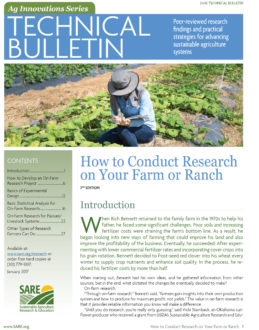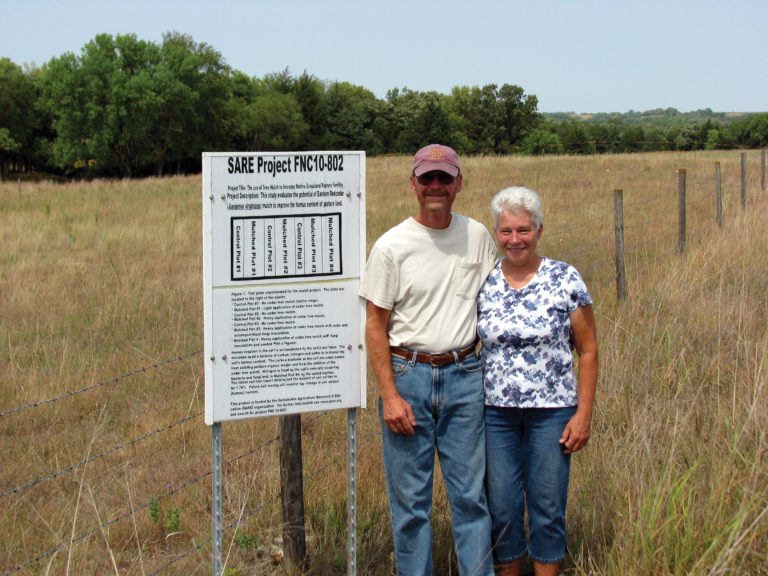Like all natural systems, your farm or ranch is affected by environmental factors such as climate, weather, soils and topography, and by the interactions between the various plants, animals and microorganisms that live in that system. Farming in this complex and constantly changing environment raises a host of questions and problems as each day and each season bring new challenges. As a result, farmers and ranchers are always exploring new ideas and ways of doing things. In response to a problem or some new bit of information, you experiment with new techniques, tweak your production system, observe the results and draw a conclusion: It worked well, it did not work or you did not see any difference.
As you look into new practices, you need a way of knowing if the effects that you observe in crop yield or quality, in increased soil organic matter, or in water infiltration are a result of the natural variation that occurs within the farm system, or whether they are truly a result of changing practices.
Just as university researchers try to control natural variability in small-plot or greenhouse experiments, you will use on-farm research to help you sort out specific questions and arrive at definitive conclusions. On-farm research takes your role as a researcher to a whole new level.
On-farm research is generally:
- Conducted on a working farm or ranch. If multiple farms are included in the study, a high level of coordination is required to minimize variability between the sites and ensure consistency in how treatments and practices are applied across farms.
- Conducted on a small part of the farm but uses plots large enough to allow for the use of standard field equipment and practical data collection.
- A partnership between between you, or you and a group of farmers, and agricultural agricultural service providers, including Extension, consultants, seed dealers, etc. Professional researchers may provide leadership, guidance and assistance, but you are directly involved in the design and management of the project.
- A process that uses clearly defined methods of experimental design with replications and statistical analysis (described later in this bulletin). These techniques allow you to identify and isolate the effects of natural variation so that the true effects of changing practices are more clearly detectable. Statistical analysis helps you conclude whether the differences you observe are due to the different treatments (practices) or are merely a result of chance, within certain levels of probability.
This last point—the use of statistics—distinguishes on-farm research from on-farm demonstrations or variety plots. On-farm research identifies and validates answers to a specific research question. In contrast, on-farm demonstrations are designed to show other farmers a new technology or production practice. Since on-farm demonstrations do not have research components, you do not need to measure or analyze yield responses or other data—instead, you observe and note any results or trends in the field, and then share those outcomes with other farmers. Variety trials can fall under either category depending on their purpose and how they are planned: If you use established research methods to compare the performance of two or three varieties under the same growing conditions, then those trials would be classified as on-farm research; if you plant large plots of several varieties (one variety each in several large plots), that would be an on-farm demonstration.
Funded Research in the SARE Project Reports Database
The SARE project reports database can help as you plan your research project. You can see what kinds of projects have been funded, what amount of reporting will be expected, and if other farmers or ranchers have done similar research and what they learned. When conducting a search, select “Farmer/Rancher Grant” under “Project Type” to limit results to projects conducted by other farmers and ranchers.

